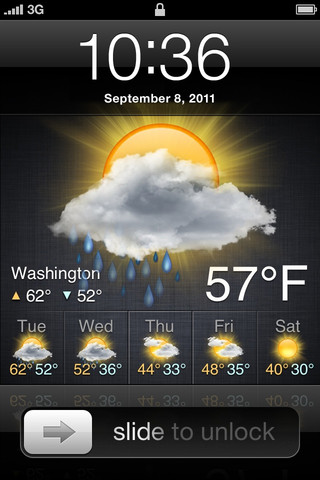

- #WEATHER DISPLAY VS WEATHERCAT HOW TO#
- #WEATHER DISPLAY VS WEATHERCAT DRIVER#
- #WEATHER DISPLAY VS WEATHERCAT SOFTWARE#
- #WEATHER DISPLAY VS WEATHERCAT FREE#
#WEATHER DISPLAY VS WEATHERCAT HOW TO#
If you think in Fahrenheit but Google Assistant reports the weather in Celsius (or vice versa), here's how to change the Google Home setting for weather units.ġ. Open the Google Home app on your tablet or smartphone and tap on Settings, then scroll almost to the bottom and tap More settings.Ģ. Scroll to near the bottom of the list and tap Weather: preferred weather unit and choose either Celsius or Fahrenheit. You'd think just knowing what country you live in would be enough for Google Home to select your preferred weather unit, but that's not always the case. Here's how to make sure your home address is set correctly.ġ. Open the Google Home app on your tablet or smartphone then tap on Settings.Ģ. Under the General heading, make sure the Home address listed matches your actual home address.ģ. If the address listed is wrong, tap on the address, tap Remove address, then tap Remove address again to confirm.Ĥ. From Settings > General, tap Set address then tap Street address to input your correct address.Ĭheck your home address in your Google Home app settings to make sure you're getting the right forecast for your part of the world. Most of the time you'll probably want the weather report for the part of the world in which you live, so you'll want to make sure Google Home knows exactly where that is. Here's how you can access all the useful, fun and sometimes otherworldly weather information Google Home can give you beyond just the standard weather report. You can get info on air quality, sunrise and sunset times, wave conditions, river levels and even atmospheric conditions on Jupiter, if you're planning any interplanetary travel. By knowing what to ask, you can access vastly more information than the standard Google Home weather report. Google smart speakers and displays use data from The Weather Channel by default, but that doesn't mean it's the only one available to you. Google Home can actually give you even better and more useful information than just today's temperature and humidity, if only you ask the right questions. Being able to get an accurate, reliable weather forecast on-demand just by asking for it is amazing, but if all you're doing is asking Google Assistant about the weather, you're missing out. Sep 9 22:17:39 raspberrypi systemd: Stopped LSB: weewx weather system.And Google Nest smart speakers can do, reporting the weather is among the coolest (or warmest, depending on the season). Sep 9 22:17:39 raspberrypi weewx: Stopping weewx weather system: weewx not running. Sep 9 22:17:39 raspberrypi systemd: Stopping LSB: weewx weather system. Sep 9 22:17:01 raspberrypi CRON: (root) CMD ( cd / & run-parts -report /etc/cron.hourly) Sep 9 22:12:34 raspberrypi weewx: **** Exiting. Sep 9 22:12:34 raspberrypi weewx: engine: Unable to load driver: unsupported device type 'fine offset WH2600/HP1000/HP1003'
#WEATHER DISPLAY VS WEATHERCAT DRIVER#
Sep 9 22:12:34 raspberrypi weewx: import of driver failed: unsupported device type 'fine offset WH2600/HP1000/HP1003' () Sep 9 22:12:34 raspberrypi weewx: interceptor: MainThread: driver version is 0.30 Sep 9 22:12:34 raspberrypi weewx: engine: Loading station type Interceptor (user.interceptor) Sep 9 22:12:34 raspberrypi weewx: engine: Using configuration file /etc/weewx/nf

I have this answer sudo tail -f /var/log/syslog Problem solved, but when I run the command
#WEATHER DISPLAY VS WEATHERCAT SOFTWARE#
I myself use a Raspberry PI 2 B with wired network connection to my router for my weather station software and I can send you my log book how I installed weewx. Personally I would recommend a Raspberry PI 3 model B which can be configured to boot directly from a USB-flash memory (without the need to place a micro SD-card) and has four USB slots for weather station, USB flash memory (and external wireless adapter for a bigger range) and an ethernet connector for a wired network connection. So probably you need a few adapter cables from mini to normal formats (or an USB hub with mini connector).Īlso it is recommended to run linux on a USB-flash memory instead of the micro-SD card.
#WEATHER DISPLAY VS WEATHERCAT FREE#
The PI Zero has only one free mini USB connector and the HDMI connector is also a mini type. Not sure if a Raspberry PI Zero w is such a good choice for this configuration.ĭuring installation it might be handy to temporary connect a HDMi cable to your TV-set and a USB mouse and USB keyboard.


 0 kommentar(er)
0 kommentar(er)
